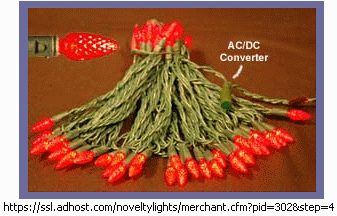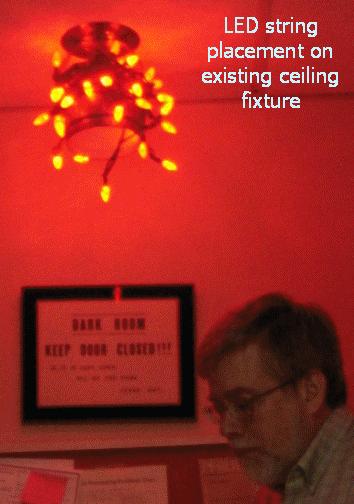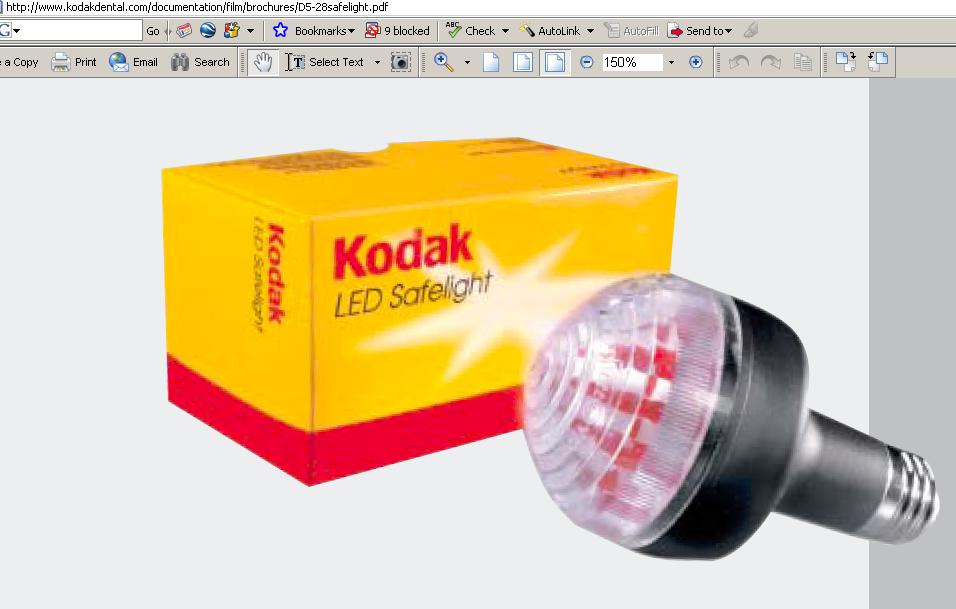http://www.kodak.com/global/en/consumer/products/techInfo/k4/k4Facts.shtml
Important Facts About Safelights
No safelight provides completely
safe exposure for an indefinite period of time.
Safelight filters are designed for specific types of paper and
film.
Safelight filters fade with use.
Poor safelight conditions can produce a loss in photographic
quality before actual fogging is visible.
Many photographic materials require handling in TOTAL darkness.
Therefore, you should
· Follow
all safelight recommendations for your paper or film. See product
instructions for recommended safelight filter, bulb wattage, and
minimum safelight distance.
· Test
your safelight conditions regularly.
· Replace
your safelight filters when necessary.
In photography, the term "safelight" describes darkroom illumination
that does not cause a visible change to light-sensitive material when
it is correctly handled and processed.
The word "safe" is relative. Most sensitized materials will be affected
if you expose them to safelight illumination for an extended period of
time. Because photographic materials vary in speed and sensitivity to
different colors of light, the recommended bulb wattages and colors of
safelight filters also vary. Safelight illumination will fog color
films and papers; color print and transparency materials; most
panchromatic black-and-white films (films that are sensitive to blue,
green, and red light); and high-speed infrared films. You must handle
these materials in total darkness. Ideally, safelight filters should
transmit only light that is outside the color-sensitivity (wavelength)
range of the photographic materials they're recommended for. Safelight
filters recommended by Kodak provide maximum transmission of those
colors that the paper or film emulsion has relatively low sensitivity
to. However, the color sensitivity of most emulsions does not end
abruptly at a par ticular wavelength in the spectrum--most emulsions
are somewhat sensitive to colors outside the intended range. This means
that most papers and films have some sensitivity even to the colors of
light transmitted by the recommended safelight filters. Therefore,
always minimize the exposure of photographic materials to safelight
illumination. A safelight has three basic parts: The lamp housing.
This holds the bulb and the filter, and keeps the white light emitted
by the bulb from escaping.
The safelight filter. This absorbs light of some colors and transmits
light of others to varying degrees.
The bulb. The recommended wattage is determined by the sensitivity of a
particular material, the transmission characteristics of the filter,
the type of illumination the lamp housing provides -- spot (direct) vs
general (indirect) -- and the distance between the safelight and the
area where you handle the material.
KODAK Safelight Lamps contains descriptions of a number of KODAK Safelight Lamps
and appropriate uses for the different types. The Safelight Recommendations table lists typical sensitized products and the safelight filters
recommended for use with them. The table also shows the bulb-wattage
recommendation for each application. See the paper or film package for
safelight recommendations for specific materials.
Be sure to follow the recommendations for both the wattage of
the bulb and the minimum distance between the lamp and the photographic
material.
The "safest" color safelight filter for a particular material is not
always the recommended one. For example, a red safelight filter often
has less effect on photographic papers than the amber filter listed in
the table. However, most workers find that they can judge print density
or perform other functions better under an amber light. (So, although
it is a slight compromise in protecting the paper from fogging, an
amber filter improves working conditions.) The apparent color of a
safelight filter is only a partial indication of its transmission
characteristics. Colored bulbs or other improvised safelights may
appear to be the right color, but they may actually emit light (or
other forms of radiant energy) that will fog a photographic emulsion.
KODAK Safelight Filters are made to precise light-transmission and
absorption standards that relate to the spectral sensitivities of
photographic materials.
Safelight filters gradually fade with use. This means that they
transmit more and more light of the colors that they absorb when they
are new. You should plan to periodically change safelight filters. For
example, if you use safelight lamps for 8 to 12 hours a day, you may
need to change the filters every three months. Bulbs eventually blacken
and produce less light. To keep the illumination level consistent,
periodically change bulbs. Noting the replacement dates on a sticker on
the safelight housing will help you keep track of bulb and filter
changes. We recommend that you change bulbs before running safelight
tests. How Safe Is Your Safelight? Menu
|


